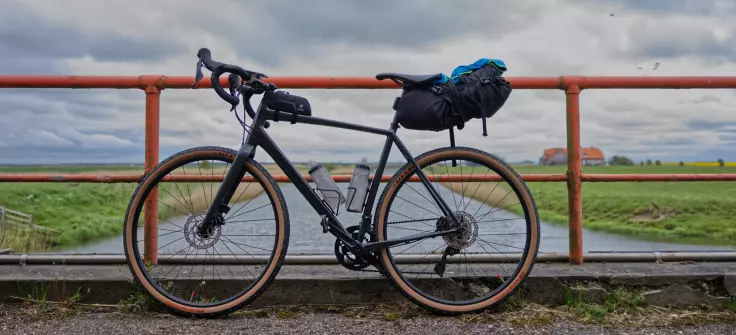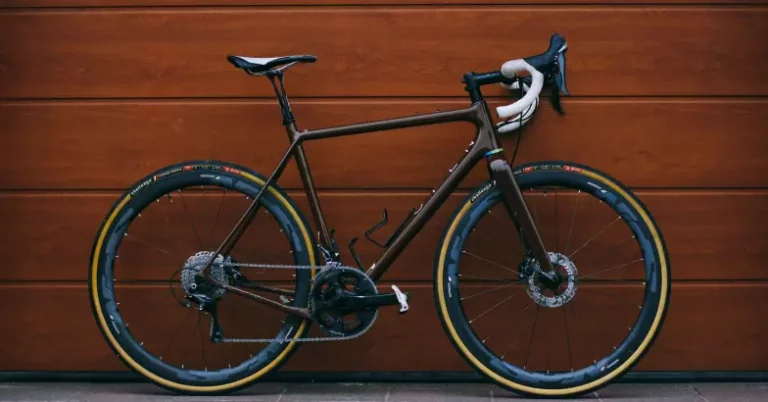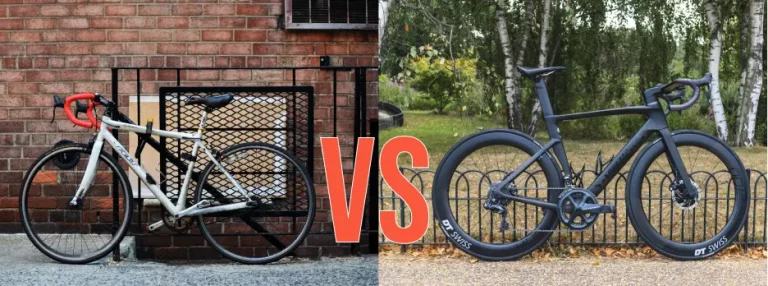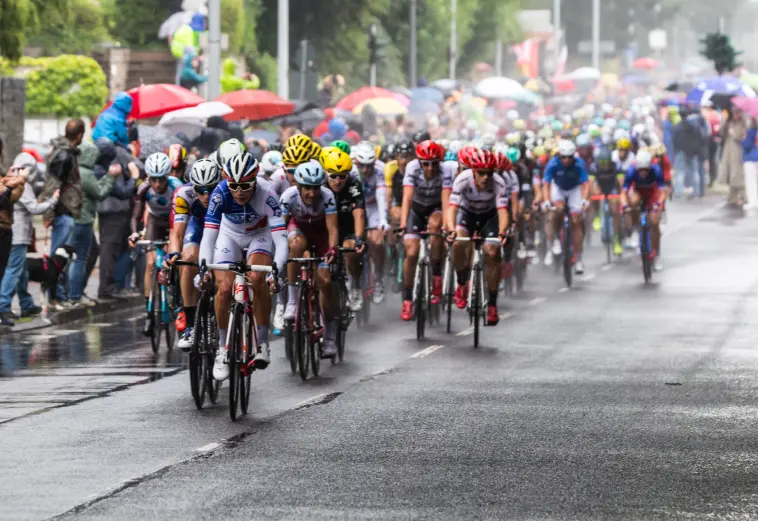Can Road Bikes go Off-Road: All You Need to Know!

Whether you own a road bike or looking to buy one, you may have thought about riding it off-road occasionally.
Sometimes, your perfectly smooth road suddenly becomes the worst road ever covered with dirt, rocks, and mud, and you have no choice but to go through it.
That’s why in this article I will tell you all the things you need to know when it comes to riding your road bike on trails.
Table of Contents
Is it Ok to Ride Your Road Bike on Trails?
Road bikes are totally capable of handling off-road terrains such as dirt, gravel, cobblestone, and mud. You just need to lower your tire PSI, avoid big rocks and use a mountain bike braking technique.
Of course, road bikes are not perfect for off-road riding but they can handle a decent portion of it.
You should keep in mind that cycling on trails is not so comfortable.
You just need to be aware.
Road bikes don’t have that much traction and control on the trails. If you are not cycling carefully you can easily crash.
Personally, I’ve been riding my race road bike with extremely narrow tires on dozens of different trails.
And I have zero problems whatsoever. Maybe it was luck but I don’t think so.
Now I will show you some of my best tips when it comes to off-road cycling that has helped me over the years I hope they do the same for you.
So let’s hop into it.
Tips When Riding Your Road Bike Off-Road
There are a bunch of tips when it comes to riding your road bike offroad but I selected the 5 best ones.
Find the Best Line
This is probably the most important and the simplest thing to do on this list.
I’m sure many people already utilize this, but I’ve also noticed that many people don’t.
And that’s finding the best possible line to ride on.
When cycling on trails try to avoid all the things that can harm your tires. Look for the smoothest path free of rocks, the tree remains, and any type of bumps and holes.
Unfortunately, sometimes you will be forced to slow down so that you have time to avoid all these things on the road.
Lower Your tire PSI
Most people are missing this and it’s very important.
I’ve seen many people go cycling offroad with 120 psi in their tires and brand-new lightweight carbon wheels.
That’s just crazy.
You don’t want your tire pressure to be too high because of the bumps on the road. Please don’t do that to your bones, I bet you won’t even last 30 minutes.
But also, you should never let your psi get too low because that will higher the chance of you getting a flat tire.
And I am sure you don’t want that weather.
So you want to keep your tire pressure somewhere between 40 and 80 psi.
Descend in the Drops
This is a really simple one.
When descending you should always be in the drops because there is a lower center of gravity, plus you have better leverage to modulate your brakes.
Also, you need to have a specific body position when descending.
Try to shift all your weight back, just get behind your saddle. Otherwise, there is a high chance to fall over.
That’s it now you are good to go.
Use a Specific Braking Technique
There is a specific braking technique used amongst mountain bikers.
And it’s called “Feathering your brakes”.
It’s very easy to do, just release a brake and then immediately press it again.
Here is how it should be done.
The whole purpose of this technique is to stay in control when you skid.
You should also be careful when cornering since braking while you are leaning on one side can easily result in a crash. So make sure you start braking a little bit even before you face the corner.
Also one more braking tip.
You should never give a full emphasis on a front brake because you can easily fall over. So try to put more braking force on the back wheel.
Put Wider Tires
Putting wider tires on your bicycle isn’t necessary.
But I will highly recommend them because they will help you in many different ways.
Here are the few benefits of putting wider tires on your road bike:
- Increased comfort
- Better cornering
- Better handles vibration
- Increase puncture resistance
Wider tires will absorb most of the bumps on the trail and therefore make your ride much more enjoyable.
Also, wider tires are far less likely to get a flat tire so you don’t need to obsess about caring for a spear tire or a puncture repairing kit all the time.
When it comes to cornering, wider tires are much more durable and gave better traction than narrow tires.
That means you will be more stable and you will significantly reduce the chance of an accident.
If you know the trail
If you want to know how to turn your road bike into a gravel bike I got you covered.
Final Thoughts
Road bikes can definitely handle some off-road terrains like dirt, stones, mud, etc.
Especially if you implement all the tips I mentioned earlier you can go on trails without any problems.
Although your road bike can handle these terrains.
I will still not recommend it if you want a full-time off-road bike.
Instead, you can try a gravel bike, he is like a child of road and mountain bikes.
You can literally go anywhere with that bike.
I hope this article was helpful!





